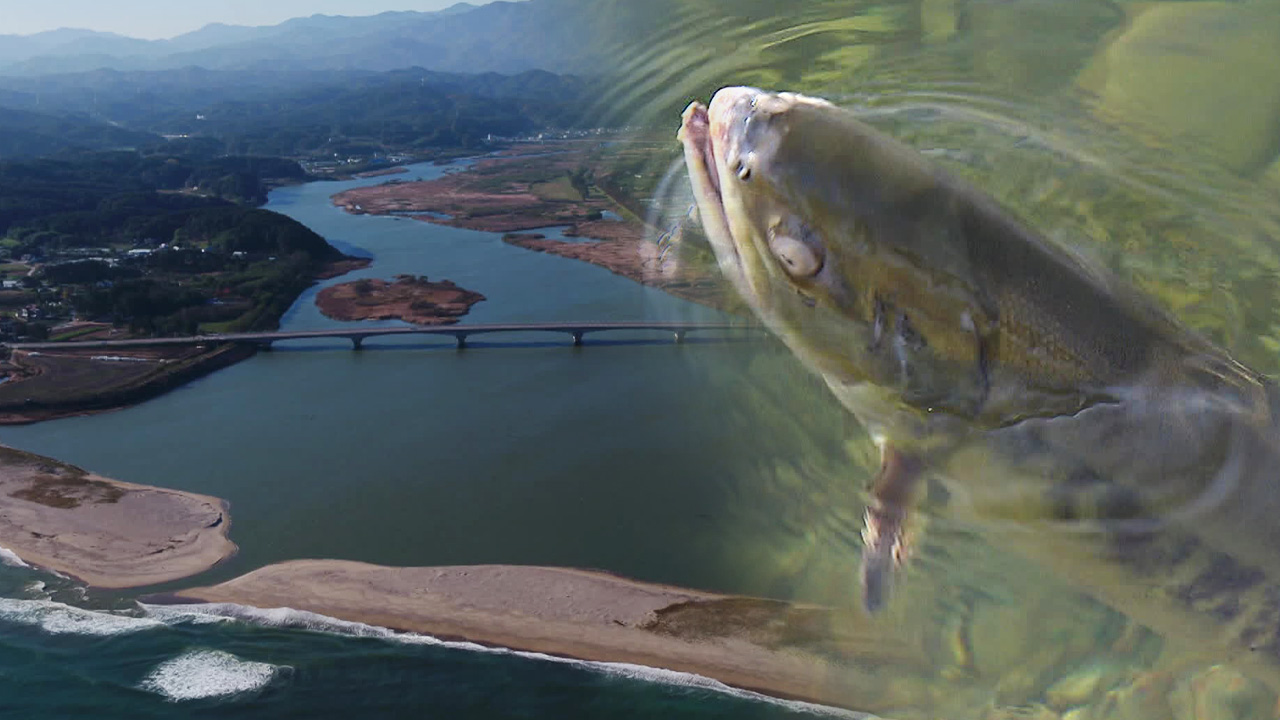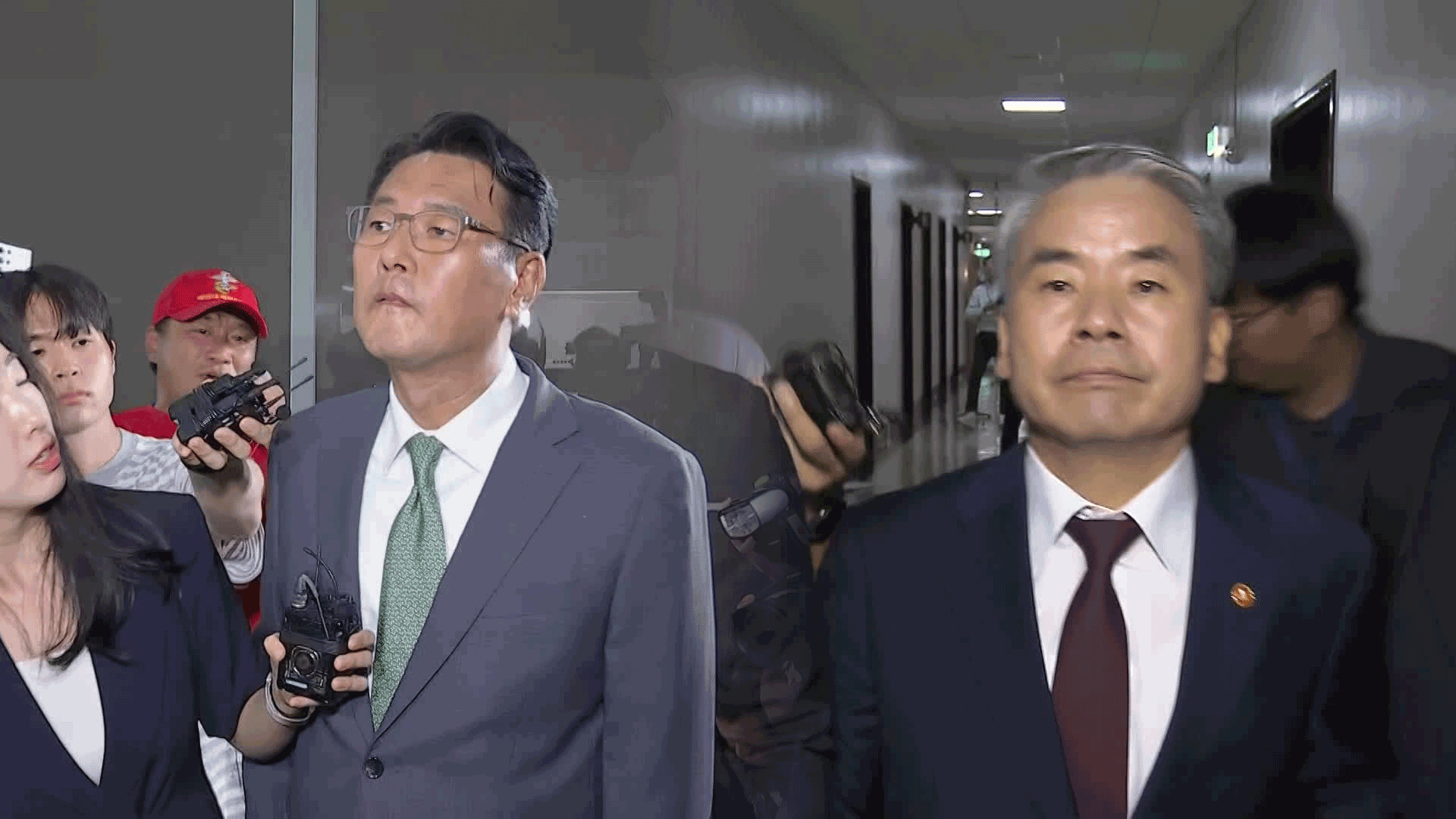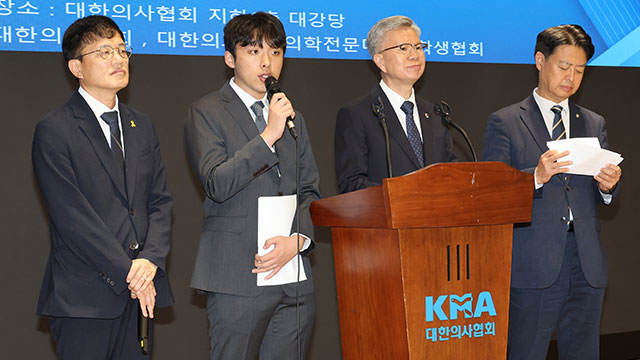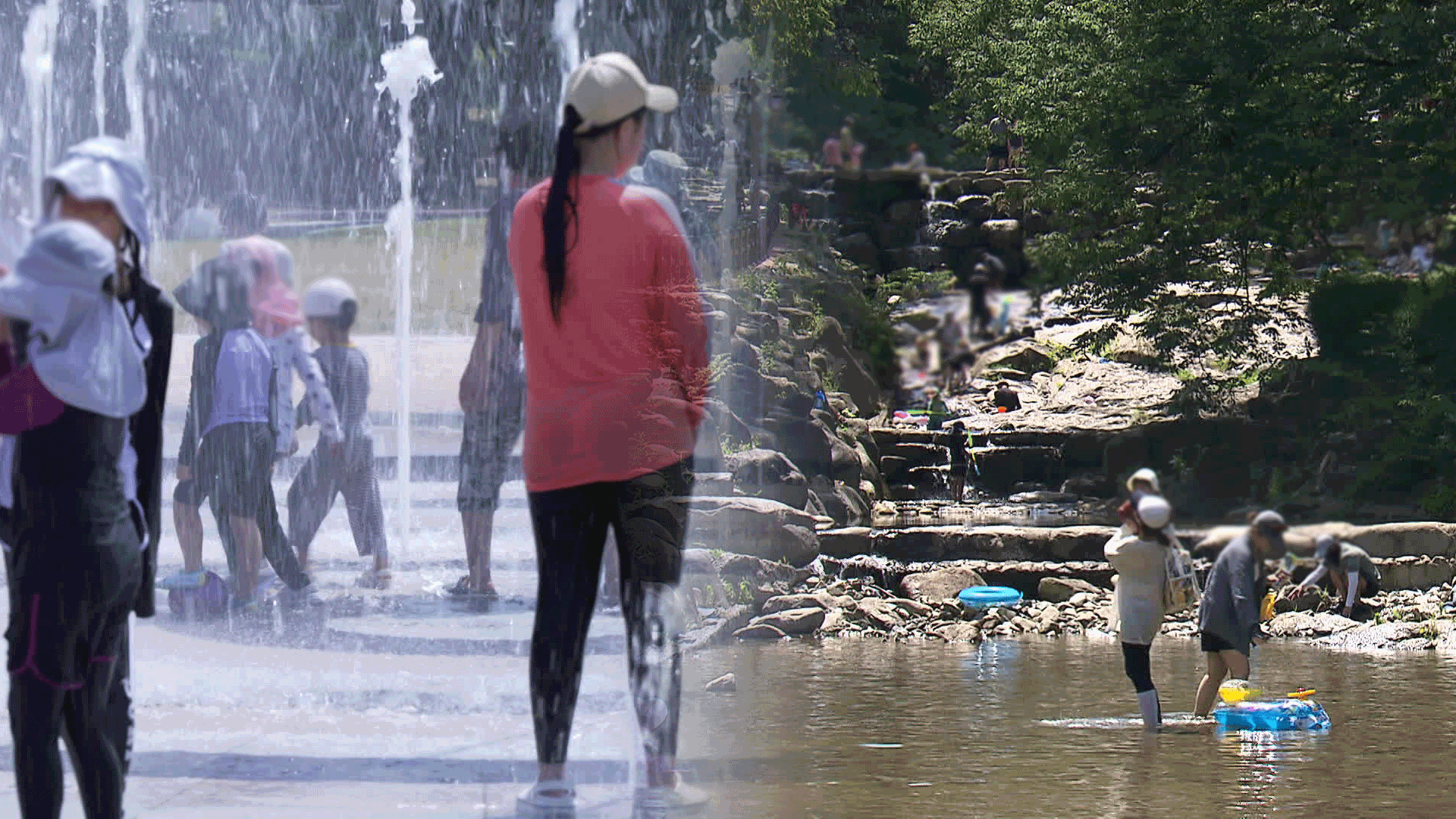Warm water temperatures cause drorp in number of salmon returning for spawning
입력 2024.12.23 (01:15)
읽어주기 기능은 크롬기반의
브라우저에서만 사용하실 수 있습니다.
[Anchor]
The number of salmon returning to domestic rivers to spawn after being in the open sea is decreasing significantly every year.
A major reason for this is the rise in water temperature due to global warming, and the fisheries authorities are actively working to increase salmon resources.
Reporter Noh Ji-young has the story.
[Report]
This is Yangyang Namdaecheon, where the most salmon return during its spawning season.
However, in the past two months, only about 1,400 salmon have returned to Namdaecheon.
This is half the number compared to the same period last year.
The situation is similar in other rivers in Gangwon Province.
Across five rivers along the eastern coast of Gangwon, only about 2,900 salmon have returned this year.
The nationwide scale of salmon return has been continuously decreasing, dropping to about 7,000 last year.
[Lee Sang-woo/Senior Researcher, East Sea Resource Center, Korea Fisheries Resources Agency: "Since 2013, the number of salmon returning to Namdaecheon has decreased by nearly 1000%."]
The biggest cause is the rise in water temperature due to climate change.
The water temperature in Namdaecheon last October was between 16 and 18 degrees, which is about 3 to 4 degrees higher than four years ago.
[Lee Sang-woo/Senior Researcher, East Sea Resource Center, Korea Fisheries Resources Agency: "They are cold-water species. Therefore, when the water temperature rises due to global warming, they are the species that are most affected."]
As the number of returning salmon decreases, the collection of eggs from salmon has also decreased, leading to a reduction in the release of juvenile salmon.
This year, the number of juvenile salmon released nationwide is 10 million, which is less than 40% of what it was ten years ago.
[Park Jin-cheol/Marine Fisheries Researcher, Samcheok Fisheries Resources Center: "To increase the resources of Pacific salmon, we are conducting research projects to develop land-based aquaculture technology using the remaining fingerling released this year."]
The government, which is in a state of emergency due to the decline in fishery resources, has decided to create natural spawning grounds to increase the hatching rate of salmon and to focus on artificial breeding of salmon.
This is KBS News, Noh Ji-young.
The number of salmon returning to domestic rivers to spawn after being in the open sea is decreasing significantly every year.
A major reason for this is the rise in water temperature due to global warming, and the fisheries authorities are actively working to increase salmon resources.
Reporter Noh Ji-young has the story.
[Report]
This is Yangyang Namdaecheon, where the most salmon return during its spawning season.
However, in the past two months, only about 1,400 salmon have returned to Namdaecheon.
This is half the number compared to the same period last year.
The situation is similar in other rivers in Gangwon Province.
Across five rivers along the eastern coast of Gangwon, only about 2,900 salmon have returned this year.
The nationwide scale of salmon return has been continuously decreasing, dropping to about 7,000 last year.
[Lee Sang-woo/Senior Researcher, East Sea Resource Center, Korea Fisheries Resources Agency: "Since 2013, the number of salmon returning to Namdaecheon has decreased by nearly 1000%."]
The biggest cause is the rise in water temperature due to climate change.
The water temperature in Namdaecheon last October was between 16 and 18 degrees, which is about 3 to 4 degrees higher than four years ago.
[Lee Sang-woo/Senior Researcher, East Sea Resource Center, Korea Fisheries Resources Agency: "They are cold-water species. Therefore, when the water temperature rises due to global warming, they are the species that are most affected."]
As the number of returning salmon decreases, the collection of eggs from salmon has also decreased, leading to a reduction in the release of juvenile salmon.
This year, the number of juvenile salmon released nationwide is 10 million, which is less than 40% of what it was ten years ago.
[Park Jin-cheol/Marine Fisheries Researcher, Samcheok Fisheries Resources Center: "To increase the resources of Pacific salmon, we are conducting research projects to develop land-based aquaculture technology using the remaining fingerling released this year."]
The government, which is in a state of emergency due to the decline in fishery resources, has decided to create natural spawning grounds to increase the hatching rate of salmon and to focus on artificial breeding of salmon.
This is KBS News, Noh Ji-young.
■ 제보하기
▷ 카카오톡 : 'KBS제보' 검색, 채널 추가
▷ 전화 : 02-781-1234, 4444
▷ 이메일 : kbs1234@kbs.co.kr
▷ 유튜브, 네이버, 카카오에서도 KBS뉴스를 구독해주세요!
- Warm water temperatures cause drorp in number of salmon returning for spawning
-
- 입력 2024-12-23 01:15:55

[Anchor]
The number of salmon returning to domestic rivers to spawn after being in the open sea is decreasing significantly every year.
A major reason for this is the rise in water temperature due to global warming, and the fisheries authorities are actively working to increase salmon resources.
Reporter Noh Ji-young has the story.
[Report]
This is Yangyang Namdaecheon, where the most salmon return during its spawning season.
However, in the past two months, only about 1,400 salmon have returned to Namdaecheon.
This is half the number compared to the same period last year.
The situation is similar in other rivers in Gangwon Province.
Across five rivers along the eastern coast of Gangwon, only about 2,900 salmon have returned this year.
The nationwide scale of salmon return has been continuously decreasing, dropping to about 7,000 last year.
[Lee Sang-woo/Senior Researcher, East Sea Resource Center, Korea Fisheries Resources Agency: "Since 2013, the number of salmon returning to Namdaecheon has decreased by nearly 1000%."]
The biggest cause is the rise in water temperature due to climate change.
The water temperature in Namdaecheon last October was between 16 and 18 degrees, which is about 3 to 4 degrees higher than four years ago.
[Lee Sang-woo/Senior Researcher, East Sea Resource Center, Korea Fisheries Resources Agency: "They are cold-water species. Therefore, when the water temperature rises due to global warming, they are the species that are most affected."]
As the number of returning salmon decreases, the collection of eggs from salmon has also decreased, leading to a reduction in the release of juvenile salmon.
This year, the number of juvenile salmon released nationwide is 10 million, which is less than 40% of what it was ten years ago.
[Park Jin-cheol/Marine Fisheries Researcher, Samcheok Fisheries Resources Center: "To increase the resources of Pacific salmon, we are conducting research projects to develop land-based aquaculture technology using the remaining fingerling released this year."]
The government, which is in a state of emergency due to the decline in fishery resources, has decided to create natural spawning grounds to increase the hatching rate of salmon and to focus on artificial breeding of salmon.
This is KBS News, Noh Ji-young.
The number of salmon returning to domestic rivers to spawn after being in the open sea is decreasing significantly every year.
A major reason for this is the rise in water temperature due to global warming, and the fisheries authorities are actively working to increase salmon resources.
Reporter Noh Ji-young has the story.
[Report]
This is Yangyang Namdaecheon, where the most salmon return during its spawning season.
However, in the past two months, only about 1,400 salmon have returned to Namdaecheon.
This is half the number compared to the same period last year.
The situation is similar in other rivers in Gangwon Province.
Across five rivers along the eastern coast of Gangwon, only about 2,900 salmon have returned this year.
The nationwide scale of salmon return has been continuously decreasing, dropping to about 7,000 last year.
[Lee Sang-woo/Senior Researcher, East Sea Resource Center, Korea Fisheries Resources Agency: "Since 2013, the number of salmon returning to Namdaecheon has decreased by nearly 1000%."]
The biggest cause is the rise in water temperature due to climate change.
The water temperature in Namdaecheon last October was between 16 and 18 degrees, which is about 3 to 4 degrees higher than four years ago.
[Lee Sang-woo/Senior Researcher, East Sea Resource Center, Korea Fisheries Resources Agency: "They are cold-water species. Therefore, when the water temperature rises due to global warming, they are the species that are most affected."]
As the number of returning salmon decreases, the collection of eggs from salmon has also decreased, leading to a reduction in the release of juvenile salmon.
This year, the number of juvenile salmon released nationwide is 10 million, which is less than 40% of what it was ten years ago.
[Park Jin-cheol/Marine Fisheries Researcher, Samcheok Fisheries Resources Center: "To increase the resources of Pacific salmon, we are conducting research projects to develop land-based aquaculture technology using the remaining fingerling released this year."]
The government, which is in a state of emergency due to the decline in fishery resources, has decided to create natural spawning grounds to increase the hatching rate of salmon and to focus on artificial breeding of salmon.
This is KBS News, Noh Ji-young.
-
-

노지영 기자 no@kbs.co.kr
노지영 기자의 기사 모음
-
이 기사가 좋으셨다면
-
좋아요
0
-
응원해요
0
-
후속 원해요
0















이 기사에 대한 의견을 남겨주세요.